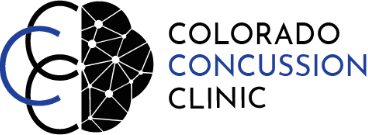CoTrauma After a Head Injury
The brain is brilliant at survival, which can make your recovery more difficult.
A head injury can change everything. Your brain is smart - and adaptable. However, due to the nature of head injury or whiplash, your brain may stay locked into a protective response, long after the danger has passed, stalling your healing process.
Imagine enduring a rock concert 24/7 under the loudest speaker - this is what it can feel like with a ricochet of symptoms after a concussion.
After a traumatic brain injury (TBI) or concussion, you may feel “fine” at first. But weeks, months, or even years later, lingering symptoms often appear, such as:
Brain fog and slowed thinking
Headaches or migraines
Word-finding difficulties
Memory problems
Dizziness, nausea, or balance issues
Sensitivity to light and sound
Mood Issues like Depression or Anxiety
These aren’t random side effects—they are likely the result of both physical injury and your intelligent nervous system creating negative adaptations (hello trauma).
What Happens During a Head Injury?
The brain is like jello in a jar. It’s cushioned by cerebrospinal fluid, fascia, dura mater, and the skull. But during an impact, the brain can be impacted by the hard skull, or changes in fascial restriction and blood flow can occur.
Even without loss of consciousness, this can set off a chain reaction:
Structural and Physical Stress
Tissue constriction or shearing
Reduced blood flow and oxygenation
Strain in the neck, spine, and surrounding structures
Physiological Nervous System Response
The brain prioritizes survival by slowing high-level processing.
Chemical, emotional, and physical imprints are encoded in the nervous system.
Even if you feel “okay,” your body may react as if the trauma is still happening. You are likely not even consciously aware of the impact chemically, physically and emotionally. This is where our body compensates with difficult symptoms that lock this history in our tissues.
This explains why many people develop ongoing sensory overload, fatigue, mood changes, or sleep problems long after the initial injury. Or why you aren’t responding to very helpful therapies.
Why Symptoms Persist
Trauma locks the nervous system into a contradictory state:
One foot on the gas: hyperarousal, anxiety, irritability, poor sleep.
One foot on the brake: brain fog, fatigue, poor recall, slowed processing.
You can’t drive with a parking brake! The Colorado Concussion Center can help.
In addition to cognitive, physical and vision therapies, we provide a specific form of Neurofeedback technology called the LENS, which works to help the brain shift out of trauma patterning, and the results are often dramatic.
LENS Therapy has shown rapid, even startling improvement (Larsen, 2006. The Healing Power of Neurofeedback)
How LENS Neurofeedback Helps
Your brain can repair itself. The Low Energy Neurofeedback System (LENS) offers a gentle way for your nervous system to downshift, so your brain can reset itself.
“The LENS seems to increase cortical flexibility, decrease rigid and inflexible adaptations, and harmonize and balance the activity of the CNS” (Larsen, 2006).
Tiny signal: Sensors measure brain activity and send back a signal offset from the brain’s own rhythm—1,000 x weaker than traditional neurofeedback.
Breaks stuck patterns: This slight nudge bypasses protective filters and helps the brain reorganize, likely increasing blood flow, balancing brainwave function and boosting neuroplasticity.
Encourages natural repair: Your brain isn’t forced to change in a specific way - with the LENS, your brain drives the feedback to change itself.
Research supports LENS as an effective therapy for symptoms of both TBI and trauma:
Traumatic Brain Injury: LENS therapy has been shown to result in “reports of restored cognition, reduced headaches, and even recovery of smell after head trauma (Hammond, 2007, 2017).
PTSD & Trauma: LENS reduces hyperarousal, improves sleep, and helps restore balance to emotional processing (Larsen, 2006). Most patients often describe feeling calmer, clearer, and less reactive.
Schedule a LENS Brain Mapping
If you’re struggling with brain fog, dizziness, headaches, or mood changes after a head injury, it may not be the impact itself causing ongoing problems—but your nervous system’s protective response.
Even if you’ve tried everything - the LENS is different. Schedule your first LENS session at the Colorado Concussion Clinic.
Your brain wants to heal. It’s time to let go of the brakes.
CITATIONS
Larsen, S. (2006). The healing power of neurofeedback: The revolutionary LENS technique for restoring optimal brain function. Rochester, VT: Healing Arts Press.
Hammond, D. C. (2007, 2014). QEEG evaluation of LENS treatment of TBI. Journal of Neurotherapy, 14, 170-177.

